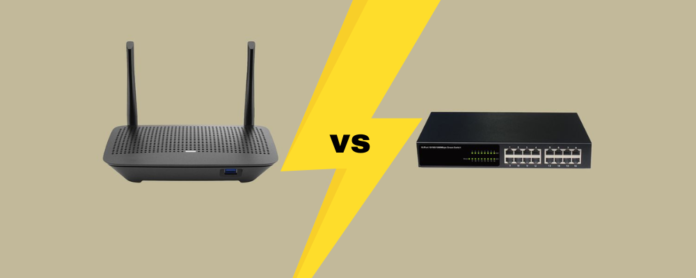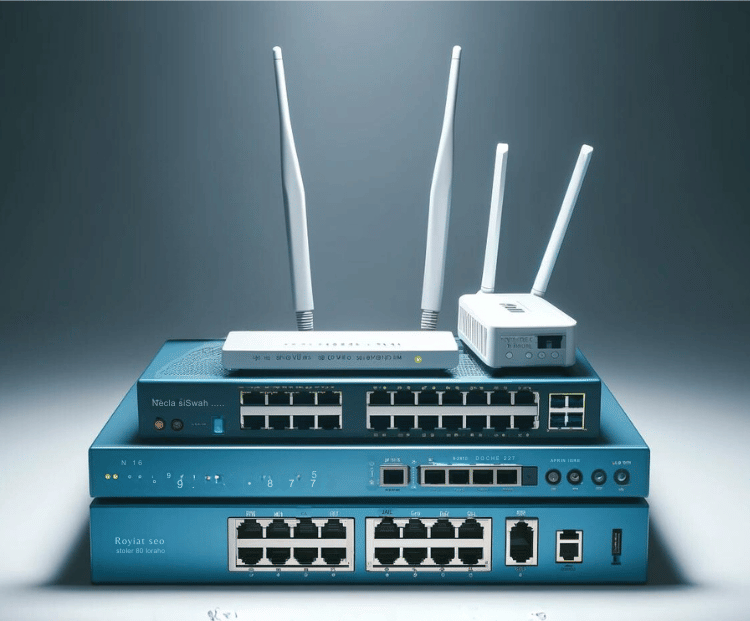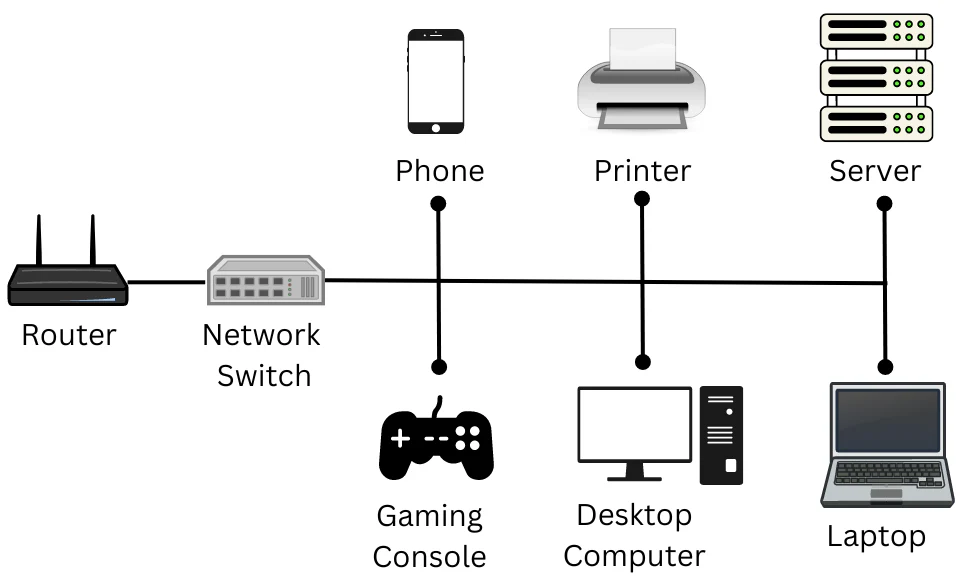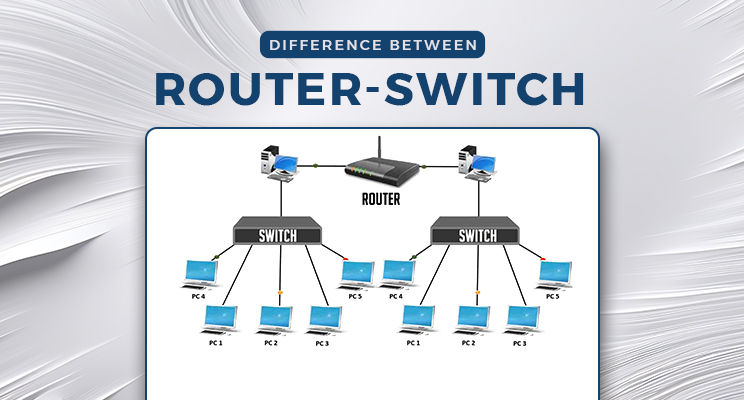A reliable and efficient network is the backbone of any successful operation in this fast-paced business world. For a small business that has to deal with networks or any growing enterprise, this guide is crucial since it explains the difference between routers and switches and their synergy in building an IT infrastructure. This guide will cascade the functions of routers and switches, how they affect business scenarios, and how they create business success.
What Are Routers and Switches?
Before delving into their importance, it is essential to expound upon the concepts of routers and switches:
Routers:
An intelligent security device that connects a number of networks, such as the local area to the big bad internet. It sends the packets across the network between the connected devices and sees that the information reaches its destination. A router provides security features such as firewalling and supporting VPNs.
Switches:
A switch is a device connecting computers within a local area network (LAN), for example, computers, printers, and servers. It directs data in a manner that permits only the intended recipient to receive and process that data, thereby enhancing communication among devices while reducing congestion on the network.
The Role of Routers in the Business World
1. Internet Connectivity and Network Management
Routers are the gateway to internet access for your business. They manage traffic, allowing employees to access online resources, cloud services, and communication tools such as email and video conferencing.
2. Network Security
Routers are the first layer of defense against threats to cyber security. They usually feature built-in firewalls, intrusion detection systems, and support for setting up a virtual private network (VPN) for secure remote access.
3. Traffic Prioritization
Some activities (like video calls or cloud backups) take a lot more bandwidth than other activities do in a business setting. Routers can set priority traffic for these services, so important applications can run smoothly, instead of getting bogged down, increasing productivity.
4. Supports Multiple Networks
Routers let businesses set up separate networks for various purposes, for instance, a guest Wi-Fi network for visitors and another secure one for internal operations.
The Importance of Switches in a Business Environment
1. Efficient Local Communication
Switches facilitate efficient and speedy communication between devices in your office. For instance, employees can share files and also print documents or access shared resources like servers without the internet.
2. Improved Network Performance
Hubs broadcast data to all devices, while switches send data exclusively to the recipient device. This functionality offsets congestion in networks and enhances the performance of the networks with many devices attached.
3. Scalability
Every expansion of a business results in an increased requirement for devices and connections. There are various sizes of switches, from small five-port switches to large enterprise-class forty-eight-port switches, and thus scaling becomes easier for the network.
4. Power Over Ethernet (PoE) Support
PoE is supported by many modern switches and allows them to supply power to devices such as IP cameras, VoIP phones, and wireless access points over the same cable that transmits data. This reduces installation complexity and costs.
How Routers and Switches Work in Conjunction
Routers and switches complement each other for smooth corporate networks:
- The router, a device that connects a medium-to-large-scale local network to the internet, manages data flow from one to the other.
- A switch then links all the devices inside the business and imparts communication capability while allowing access to the router for internet connectivity.
In simple terms, when a worker in any business sends an email, this data starts out from his computer and is directed by the switch towards the router. In turn, the router pushes the email further away to the internet outside. When the recipient, at a distant location, sends back his reply, the data comes to the router, which forwards it in kind on the switch, and all the way to the employee’s desk via another computer in the network.
Looking for Right Networking Requirements for Your Business
When considering the various factors you need to know while buying a router or switch for your business, here are some considerations:
1. Business Size
If your business runs a few devices, you could just be in the market for a simple router and a tiny switch. Enterprises might require grade-A firmware equipment with one or more specialized feature sets.
2. Speed Limits
Remember, your business must produce and consume data. Doing something that requires a lot of bandwidth, for instance, video conferencing, or moving huge files, might require something more than the usual routers and switches.
3. Security
Secure the router with good-empowered security components like firewall.
4. Future-Proofing
Go for something that will be scalable. Look out for a switch or a router that offers additional ports, PoE support, advanced management features, and the like to expand as your business grows.
Final Thoughts
Routers and switches hardly grab in publicity but are the lifeblood behind the aforementioned insect called an enterprise. While routers have one essence of connecting the business world with the large world, switches, on the other hand, provide proper means of moving around and contributing to perfection within an office setup. They work hand-in-hand.
For small business owners, getting the rich networking products is more than a technical decision; it becomes a strategic one. Understanding routers and switches helps you develop a network to address your current needs and meet your future growth opportunities.
Whether you are commissioning a new office or upgrading the existing infrastructure securing your brand name up, take the time to determine your requirements and choose the right tools for the job. Besides, a well-engineered network lays the foundation for a truly successful networking business in the digital times.






